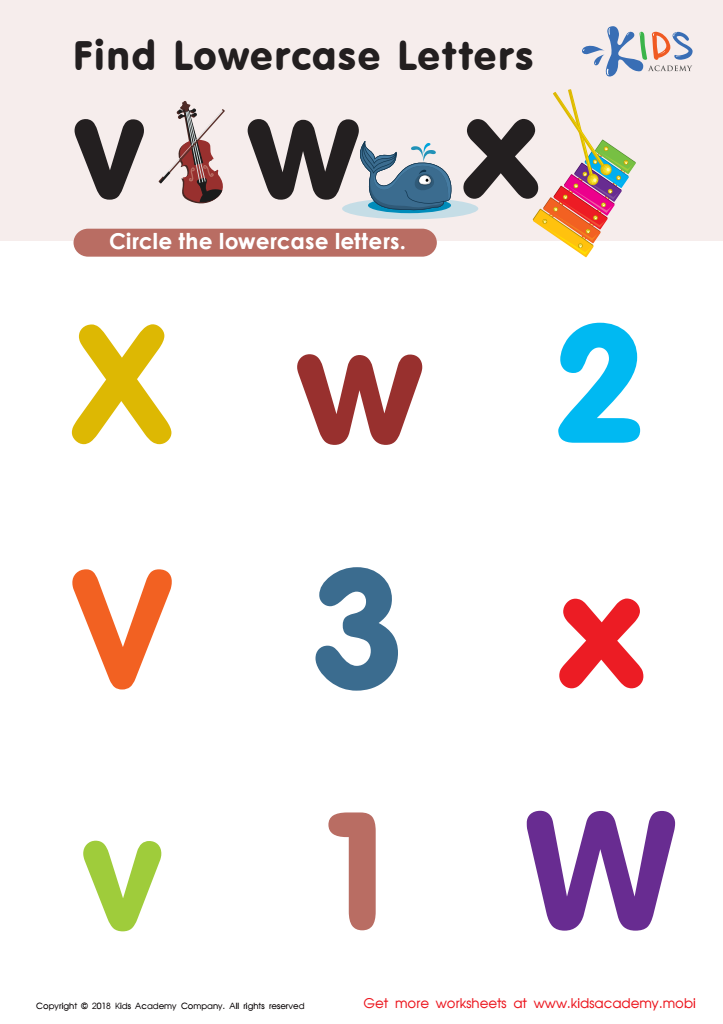Lowercase identification Normal Lowercase/Small Letters Worksheets for Ages 3-5
4 filtered results
-
From - To
Explore engaging Normal Lowercase/Small Letters Worksheets designed for children aged 3-5! Our specially crafted worksheets focus on lowercase identification, helping young learners enhance their alphabet recognition skills in a fun, interactive way. Each worksheet presents a variety of activities that encourage children to identify, trace, and color lowercase letters, fostering their literacy development. Perfect for preschool and kindergarten environments, these worksheets not only support early reading readiness but also promote fine motor skills. immerse your child in a joyful learning experience as they master lowercase letters with our vibrant, educational resources. Start their journey to literacy confidence today!


Find Lowercase Letters d e f Worksheet


Find Lowercase Letters y z Worksheet


Find lowercase letters a b c Worksheet


Find Lowercase Letters v w x Worksheet
Lowercase letter identification is a fundamental skill that greatly impacts early literacy development in children ages 3-5. Understanding lowercase letters is vital because the majority of text encountered in everyday life—such as books, signs, and digital media—predominantly features lowercase formatting. Familiarity with these letters enhances a child's ability to recognize words and sounds, which are key components of reading.
For parents and teachers, nurturing lowercase letter recognition fosters more than just reading skills; it significantly contributes to a child’s self-confidence and independence in learning. When children can identify and differentiate between lowercase letters, they become better equipped to begin reading and writing independently, leading to positive self-esteem in their educational journey.
Engaging activities that promote lowercase identification, such as reading together, writing letters, and playful games, help build essential language skills. Moreover, mastering this skill lays the groundwork for children to understand capitalization and punctuation, further enriching their literacy experience.
In essence, caring about lowercase letter recognition is investing in a child’s future success in reading and writing, enabling them to navigate and engage with the world around them more effectively. This foundational skill is essential for lifelong learning and communication.

 Assign to My Students
Assign to My Students










